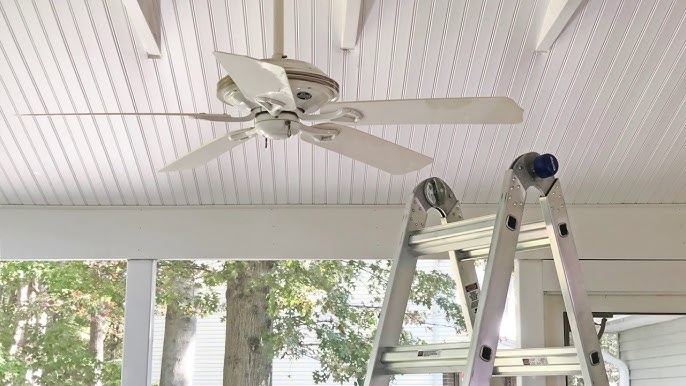
Outdoor ceiling fans and light fixtures add both comfort and style to patios, porches, and pergolas. But since they’re constantly exposed to the elements—dust, bugs, bird droppings, pollen, cobwebs, and even mildew—they can get pretty grimy over time. 😬🌿
If you’re looking to restore that fresh, clean look and get your fan blades spinning freely again, pressure washing may seem like a tempting solution. But is it safe? The answer: yes, but only with extreme care. In this guide, we’ll walk you through exactly how to pressure wash your outdoor ceiling fans and fixtures without shorting circuits or damaging delicate finishes. 🧽🔌✨
💡 Why Pressure Wash Outdoor Fixtures?
Over time, outdoor ceiling fans and lights collect:
- Dust and dirt from the air
- Insects and spider webs 🕷️
- Bird droppings and leaves
- Algae or mildew in humid areas
- Residue from nearby cooking (BBQs, grills)
While you can manually clean these with a cloth and step stool, pressure washing offers faster, more thorough results—especially if you’re already washing your siding, deck, or patio area. 🧼💨
⚠️ Is It Safe to Pressure Wash Electrical Fixtures?
Here’s the deal: most outdoor-rated ceiling fans and light fixtures are water-resistant, not waterproof. That means they can handle splashes and rain but are not designed for high-pressure streams of water.
✅ Use extreme caution. Only pressure wash if the fixture is turned off at the breaker, covered or shielded properly, and cleaned at low pressure with a wide-angle spray tip.
If you’re unsure or if your fixture has open wiring or corrosion, skip the pressure washer and clean it manually instead.
🧰 Tools & Materials You’ll Need
To clean your outdoor ceiling fan or fixture properly, gather:
- Pressure washer (1,200–1,800 PSI max)
- 25° or 40° spray nozzle
- Mild, outdoor-safe detergent
- Soft cloth or sponge
- Ladder or telescoping pole (for higher fixtures)
- Plastic bags and tape to shield electronics
- Safety glasses and gloves
- Garden hose (for light rinsing)
Browse Amazon Here For Ceiling Fan Pressure Washers And Accessories
🛠️ Preparation Is Everything
Before you even turn on the pressure washer:
- Turn Off Power at the Breaker
Don’t just flip the light switch. Shut off the power entirely to avoid electrical hazards. ⚠️ - Cover Electrical Parts
Use plastic bags and waterproof tape to cover:- Light sockets
- Pull chains
- Any exposed wiring
- Motor housing vents on ceiling fans
- Secure the Fan Blades
If possible, gently tie or tape the blades in place so they don’t spin during washing. Spinning blades + water stream = dangerous. 🌀💧 - Remove Glass Globes or Covers
If your fixture has removable parts like globes or shades, take them down and clean them separately.
🧼 How to Pressure Wash the Right Way
1️⃣ Start with a Gentle Rinse
Use a 40° spray nozzle and stand 6–8 feet away. Lightly rinse dust and surface debris from:
- Fan blades
- Light fixture arms
- Base housing
- Mounting bracket
🎯 Avoid spraying directly into the fan motor or junction box. Keep the angle downward.
2️⃣ Apply Cleaning Solution
Use an outdoor-safe soap solution to tackle:
- Bug residue
- Algae or mildew
- Grease stains (especially near grills or kitchens)
Let the cleaner sit for 3–5 minutes. If buildup is heavy, use a long-handled sponge or soft cloth to agitate the surface.
3️⃣ Rinse Again at Low Pressure
Use the same wide-angle nozzle and gentle sweeping motion to rinse off the detergent. Avoid focusing on one area too long. Pay extra attention to:
- Crevices between blades and housing
- Mounting areas where bugs or webs collect
- Decorative trim and rust-prone spots
🔧 Cleaning Glass Fixtures by Hand
Glass globes, lanterns, and decorative covers should be:
- Removed carefully
- Soaked in warm, soapy water
- Scrubbed gently with a soft cloth
- Rinsed and dried completely before reinstalling
This keeps them from cracking under pressure or collecting water inside.
✅ Final Drying & Reassembly
After rinsing:
- Remove any plastic coverings
- Dry all parts with a microfiber towel
- Let everything air dry for 2–3 hours
- Restore power at the breaker only when fully dry
- Check for flickering lights or unusual sounds before regular use
🧠 Tips for Long-Term Maintenance
- 💡 Clean outdoor fans and fixtures every 3–4 months
- 🔌 Check wiring for corrosion or loose connections annually
- 🧴 Use a corrosion inhibitor spray if you live near saltwater
- 🚫 Never use bleach or abrasive cleaners—they damage finishes
- 🛑 If your fixture buzzes, smokes, or trips a breaker, call an electrician
🧽 Alternatives If You Can’t Pressure Wash
If your fixture isn’t sealed well or is too delicate, try:
- Manual cleaning with a ladder and sponge
- Using a blower or vacuum for dust
- Soaking removable parts in vinegar-water for grime
- Using a soft wash sprayer attachment (gentler than a pressure washer)
💬 Final Thoughts
Pressure washing outdoor ceiling fans and light fixtures can save time and restore their original beauty—if you’re careful. By protecting electrical components, using low pressure, and applying proper cleaning techniques, you’ll keep your fixtures looking great and working reliably.
So the next time your outdoor space is looking dusty or dingy, don’t forget to look up. Your ceiling fan and lights deserve a refresh too! 💡🧼🌤️



